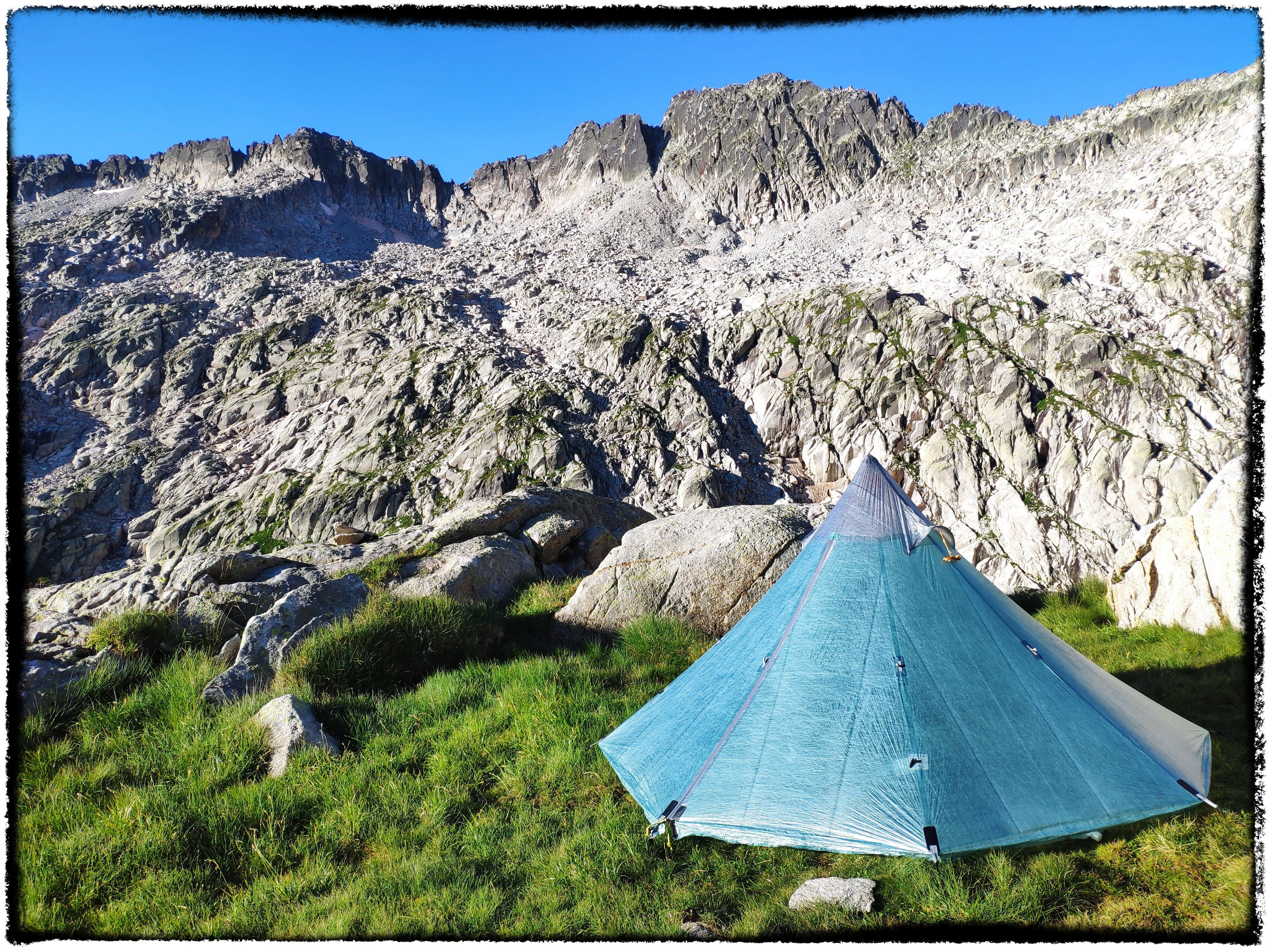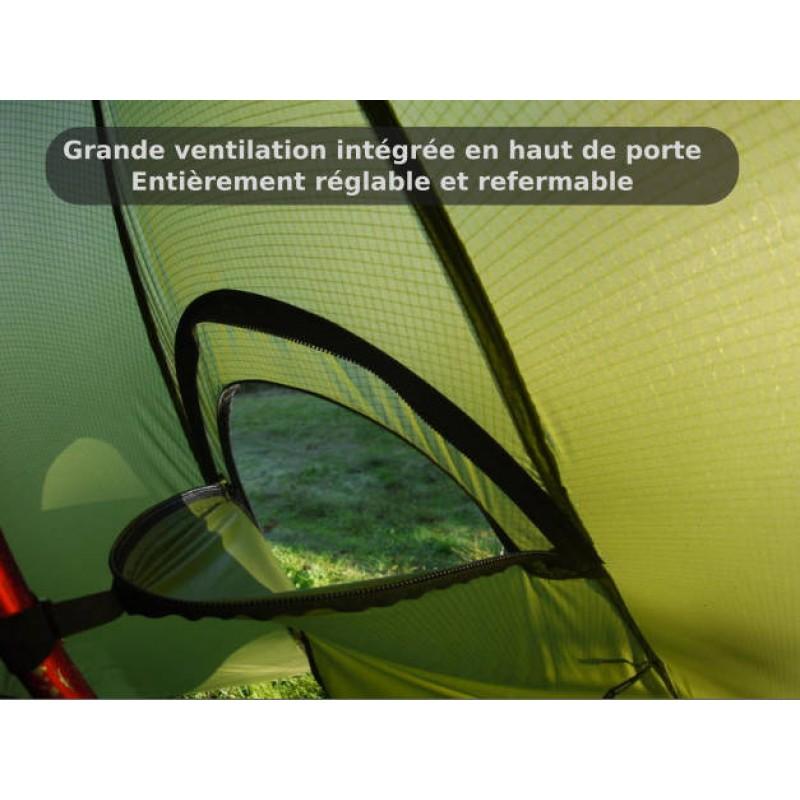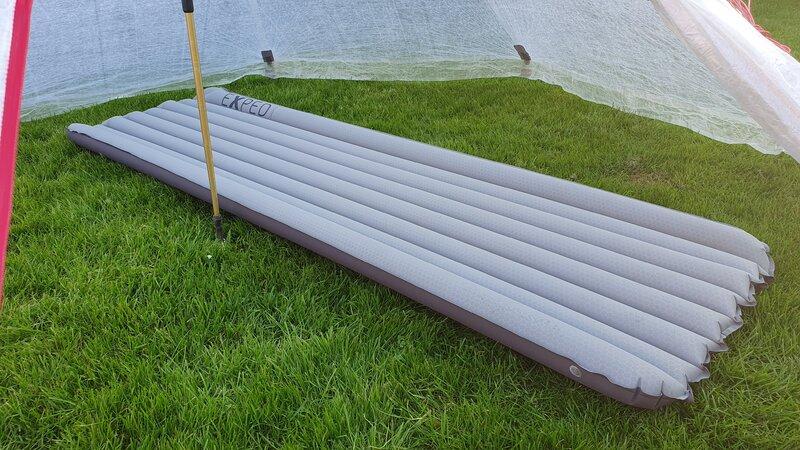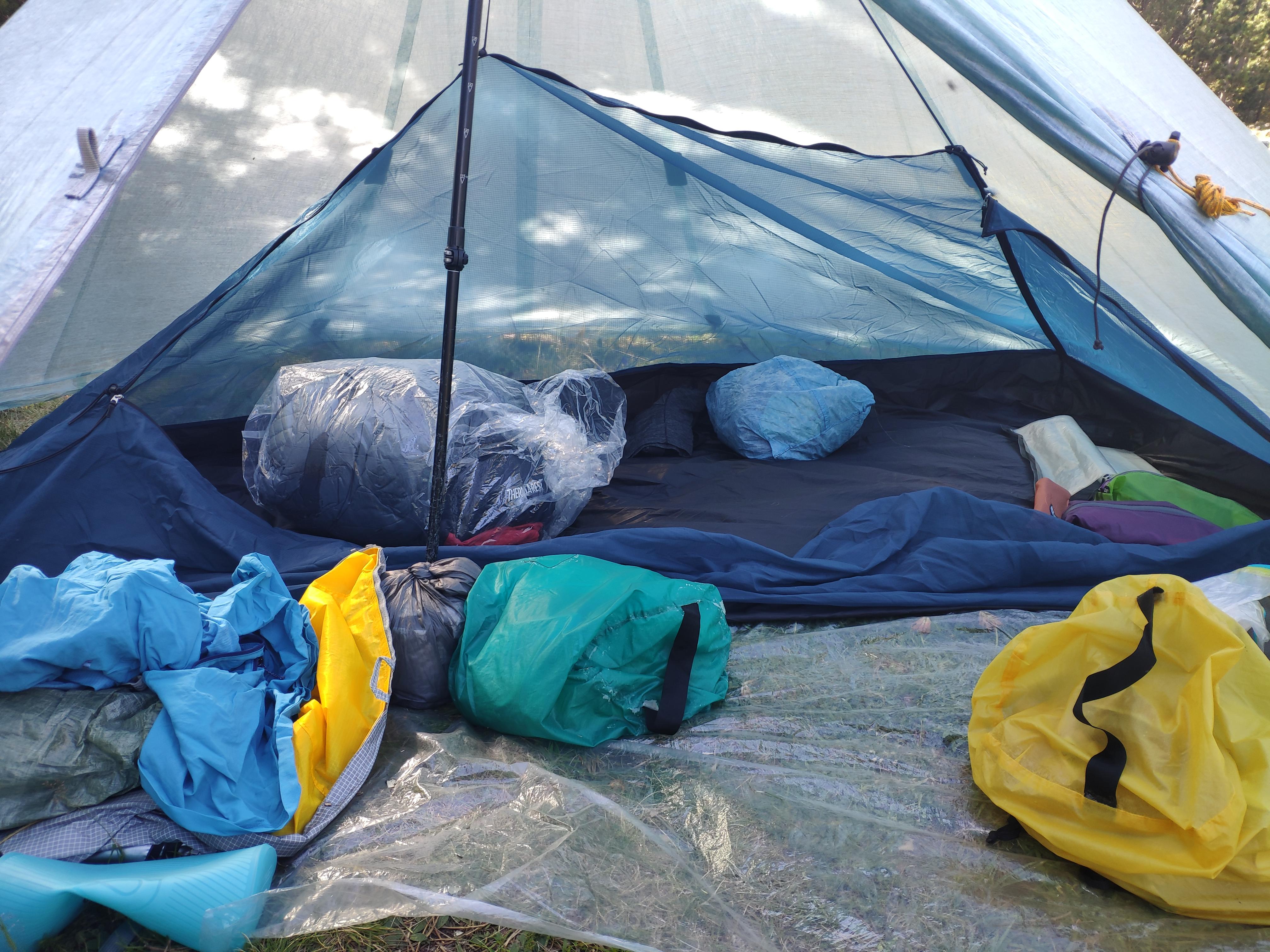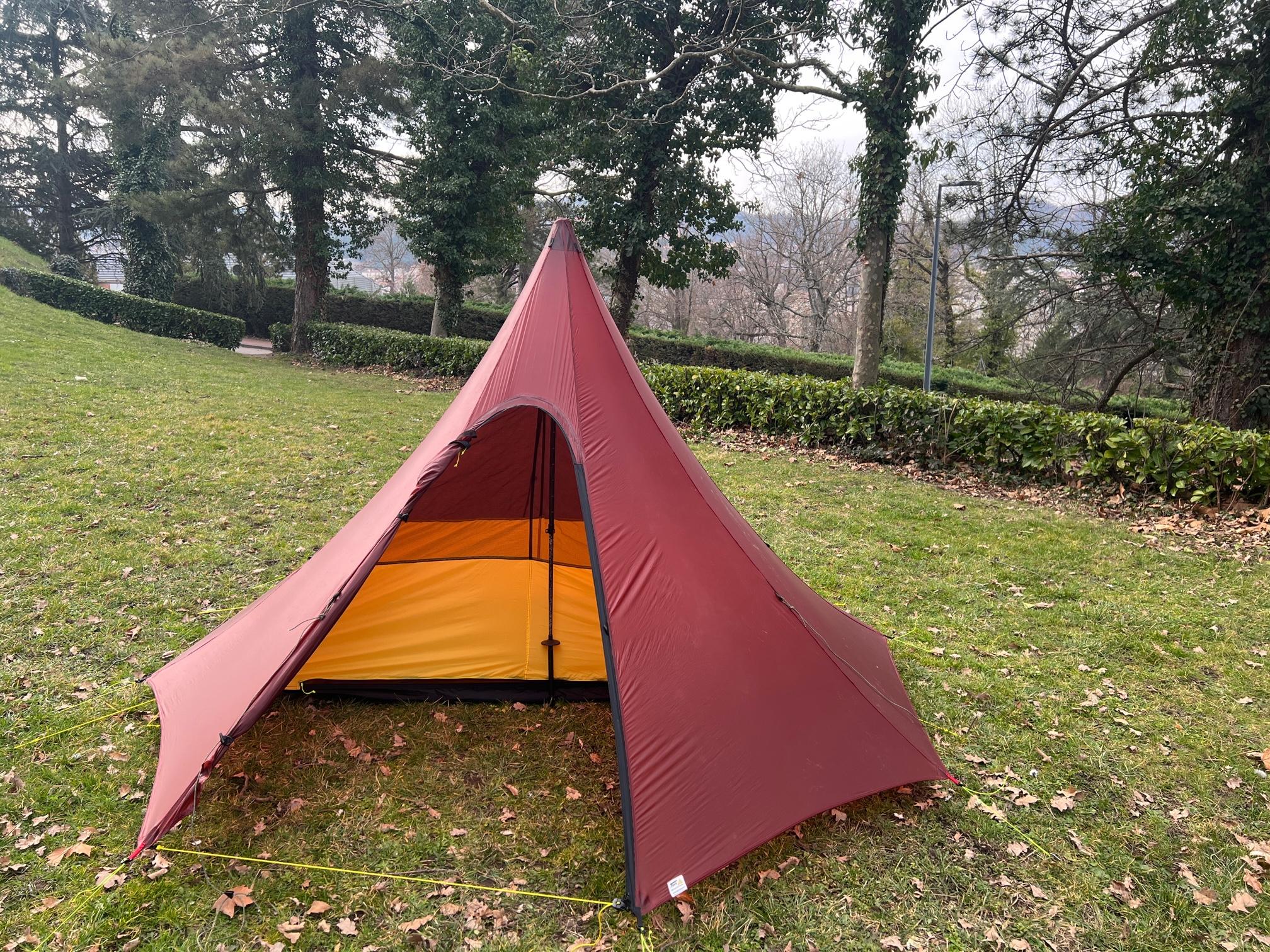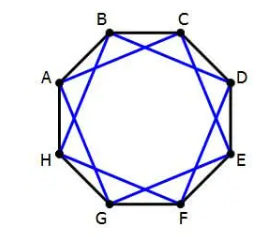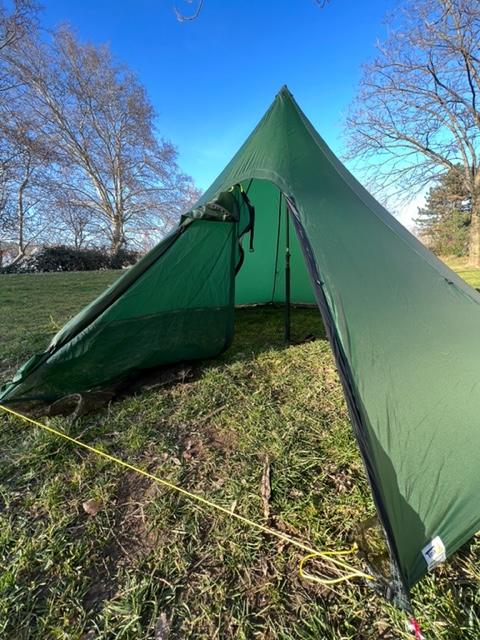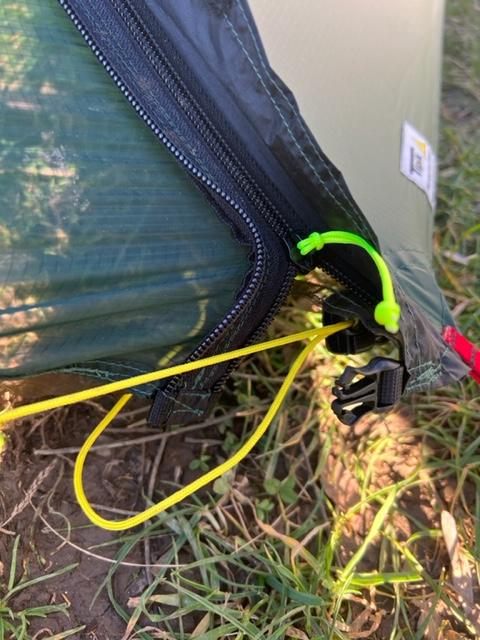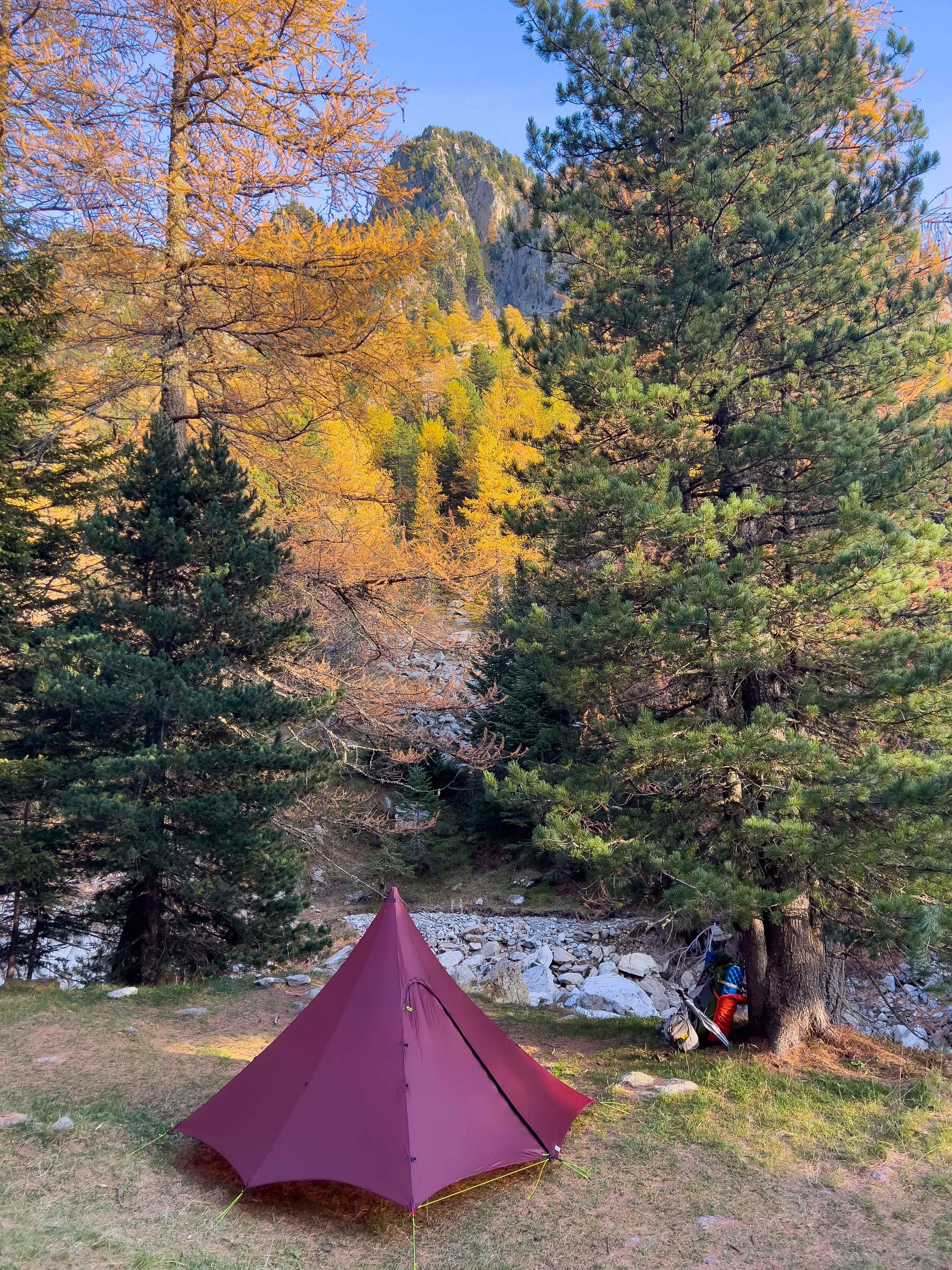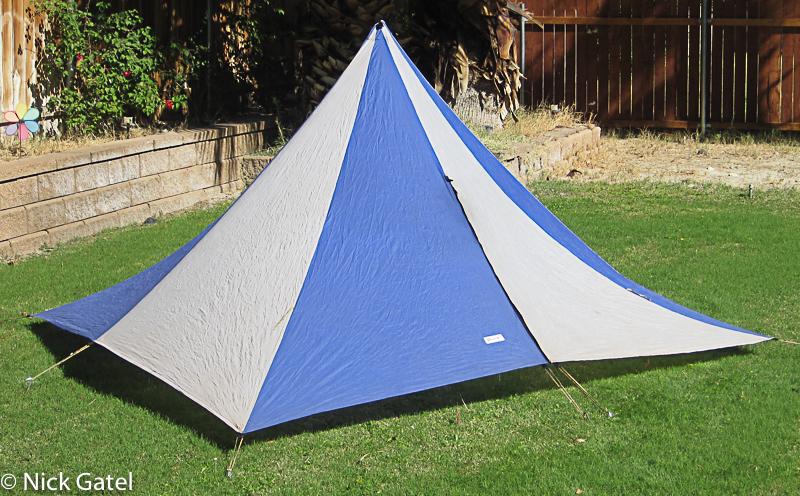Topic
Symmetrical Octagonal Mid by Tipik Tentes
Forum Posting
A Membership is required to post in the forums. Login or become a member to post in the member forums!
Home › Forums › Gear Forums › Gear (General) › Symmetrical Octagonal Mid by Tipik Tentes
- This topic has 38 replies, 12 voices, and was last updated 10 months, 2 weeks ago by
 jscott.
jscott.
-
AuthorPosts
-
Mar 19, 2022 at 1:28 pm #3743584
I am pleased to announce that Tipik Tentes, a French cottage gear manufacturer of lightweight shelters, has brought to market a symmetrical octagonal mid in 30D silpoly.
There is one currently on sale on Tipik’s website at a 20% discount. https://tipik-tentes.fr/stock/tipi_octo?_route_=stock%2Ftipi_octo . The version currently on sale is a one-off deal that is currently being sold at 20% off. Additional copies could be made at full price (contact Tipik Tentes for details). I don’t think that the manufacturer is planning to offer this as a regular item but it can be made on request. A copy of the sale page has been archived at the following address in case the page on the manufacturer’s site is taken off line (presumably once the 20% model is sold):
https://web.archive.org/web/*/https://tipik-tentes.fr/stock/tipi_octo?_route_=stock%2Ftipi_octoThe design is the result of a collaborative effort. The basic design was pioneered by Haitao Li, a brilliant Chinese designer who met an untimely end in August 2021. Haitao sold his designs via WeChat and Facebook (via the page Jumperhome). Among the products he designed, a range of symmetrical octagonal mids occupied a central place. I was fortunate to receive one of these in July 2021, a month before Haitao prematurely left us. The model that I purchased, the Mountain House 2P, was a lightweight octagonal mid made from bonded DCF. A month’s use in the Pyrenees and Alps convinced me that Haitao’s design offered the best strength to weight ratio of any lightweight shelter available. Similarly, extensive field use also showed me that Haitao’s design could be improved in numerous ways. Sadly, Haitao’s departure made it impossible to discuss those improvements with him.
Fortunately, Xavier Nitsch, the proprietor of Tipik Tentes, agreed to work with me on bringing a revised, updated version to reality.
Extended discussions with another BPL member who had also had the good fortune to grab one of Haitao’s creations led to a number of suggestions for improvement to the original design. Further extensive discussions with Xavier helped refine those suggestions and bring them to fruition. The result is a very mature design that privileges ultimate wind resistance and durability, while providing comfort and a relatively light weight at the same time. Numerous small details have been added to the original design, making this a shelter that is easy to set up in high winds by one person while offering best-in-class and then some protection.
As something of a shelter nut, I have had the opportunity to test dozens and dozens of different designs, none of which has been really satisfying. As I habitually camp in exposed sites at altitude often off trail, I value resistance to high winds without the noisy “dance” that characterizes rectangular mids and other UL shelters in general. While those shelters have their place, they don’t quite cut it for me.
Extensive use of many different models of DCF mids and shelters across more than a decade has left me pretty dissatisfied with DCF’s performance over time, especially the inevitable stretching of the fabric. Silnylon’s drawbacks are more widely recognized; no need to repeat them here. The 30D silpoly from a Taiwanese factory sold by ExtremTextil is a real breakthrough in this regard.While I haven’t yet had the chance to field test the model that Xavier made for me, my experience with Haitao’s MH 2P in DCF convinced me that nothing is better than a symmetrical octagon for superlative wind resistance at a low weight. This thing just doesn’t budge.
The improved version made in collaboration with Xavier based on our suggestions and his expertise incorporates many cool small details that add up to a significant upgrade over Haitao’s DCF model.
One of the key improvements consists in the choice of fabric. The new 30D silpoly offered by ExtremTextil in Germany is a very attractive fabric combining some of the best features of silnylon and DCF without the well-known drawbacks of each. Coated on both sides with pure silicone (not mixed with PU as many so-called silpoly fabrics are), this fabric boasts high tear resistance, high HH, low water absorption, high UV resistance, high compressibility/compactness, relatively light weight and excellent durability. The fabric of course is a big plus, but not the end of the story. The use of monolite sod skirts around the edge plus an inner door in monolite affords amazing ventilation while giving full protection against flying insects. Often you could just keep the silpoly door open while using the monolite inner door panel for superior ventilation, even in rainy weather (when used solo). For most situations, a polycryo sheet or a bathtub floor is all that is needed. One other improvement that I’m really stoked about is a line & clip at the base of the door that allows the user to maintain perfect tension on the structure even when the door is open — a key flaw in Haitao’s original design. And while the octagonal shape is inherently incredibly wind resistant, guyline points 1/3 of the way up the ridgelines plus new attachment points 3cm down from the apex allow deployment of lines for the nastiest conditions. Apex lines are really awesome and I think you only need two on opposing sides to really batten the whole structure down. To maximize strength, the eight panels that compose the octagon are continuous from the base to the apex, without any breaks (Haitao’s original design has the eight panels culminating in a separate cone). This means that the ridgeline seams are all oriented against the bias, assuring minimal stretch and maximum rigidity. This baby pitches extremely taut, doesn’t budge, and almost certainly doesn’t deform over time.This shelter is best used with a DPTE or similar by one person sleeping on the longest diagonal in the center of the shelter, but it could certainly be used occasionally by two with a single pole in the center or a two pole set up using a DPTE. If using just one central pole, it’s easy to offset the pole without affecting the geometry (I suspect the elasticity of the silpoly fabric helps here because it works better with an offset pole than on the version made with DCF, a much less forgiving fabric).
The version that I have in silpoly 30D weighs 604g without the stuff sack, including perimeter lineloc lines.
Here is a photo of the original MH2P made by Haitao

Here is a photo of the octagonal mid made by Xavier to my specs (the outer silpoly door is rolled away while the inner door in monolite is deployed):

“A harmonious shape” is the way that Xavier described it and I think that this fits it to a tee.
The price is rather high, due to the custom nature of the product. The EUR – USD conversion rate is pretty advantageous to US buyers, so there is that. The cost would obviously be considerably cheaper if it were offered as a regular product but at this point my understanding is that Xavier has no intention of doing so.
Personally, I’m just ecstatic to be able to move away from DCF and finally get truly awesome wind resistance at an acceptable weight.
I’m also comforted by the thought that is one design that could finally be recognized not as the work of a single “genius” but as the result of a community collaboration.
Mar 19, 2022 at 3:06 pm #3743603Nice looking shelter, and a great story!
So this is more of a one-person shelter, or two in a pinch, rather than a two-person shelter? I’m just trying to picture the floor area, angles, and such.
Thanks for sharing this.
Mar 19, 2022 at 3:12 pm #3743607Yes, I think this is really a one person shelter. You could use an octagon calculator to view the floor plan. The longest diagonal is 270cm. There is basically a rectangular space at the center that measures 249cm long and 102cm wide — plenty spacious for one. Used with a DPTE or similar, that would open up a perfect space for one in the middle. Alternatively, the shelter could be used with two, but I think that it wouldn’t be good for persons over 5’10” or thereabouts. I’m actually not sure about the maximum user height (well, length when lying down) so YMMV. As you say, two in a pinch, one for regular use is about right, I think.
Mar 19, 2022 at 4:23 pm #3743611Chris, just to add to what Jon has said about sizing: I have a DCF Mountain House 2p, so same dimensions as this silpoly version. I’ve used that design a fair amount, both sleeping on one side of center pole and used with an inverted-V pole configuration that allows one to sleep right in the middle of the floor.
Sleeping on one side of the tent is OK for me at 5’7″. Not great, but OK. A little cramped at shoulder and footbox on the side opposite the center pole. I would not buy this tent to use that way if I were a six footer.
But with an inverted-V the spaciousness is pretty great and I think someone much taller would be happy. Pitched like this, it’s like being in a traditional tipi, and both the sense of space and aesthetics are wonderful.
In general, mids with six or more sides are less space efficient than rectangular mids, in terms of human sleeping area. And octagonal mids are worse in this regard than hexagonal mids.
However, hexagonal mids fare better in winds than rectangular mids, and octagons are better still. So it’s a tradeoff.
Octagons really excel used by one person plus dogs and/or kids. The dogs and kids can fit comfortably in the corners around the central human-shaped rectangle.
Mar 19, 2022 at 4:40 pm #3743614Thanks, that’s a great description.
I love the aesthetics as well.
Looks like someone bought the tent!
Mar 19, 2022 at 5:07 pm #3743616Someone snagged a good deal, all things considered.
I posted info about it earlier today on a UL site in France and I think friends notified some people in the UK, too.
I hope that whomever bought it will report back on some forum somewhere about the performance.
May Haitao’s contribution be remembered!
Mar 19, 2022 at 6:11 pm #3743619C’est magnifique!
Call me superficial, but holy honey baby, this is one cool looking tent. I would buy one just based on how sweet it looks. It’s something out of Star Trek.
I like their other designs as well. Their Solo Pioulou ST XL shelter looks bigger than most solo shelters length and height wise. (127″ long) Would be a dream-boat in 0.68 DCF, but I am also willing to give the new SilPoly stuff a go after more people give it a complete thrashing for a season or two.
Here is a photo of the original MH2P made by Haitao
 Mar 19, 2022 at 6:41 pm #3743623
Mar 19, 2022 at 6:41 pm #3743623Do you know if they plan on offering that 30D Silpoly on their other shelters? I only see 20 and 40 on their site.
Mar 19, 2022 at 10:10 pm #3743648Adding an insect skirt and mesh door is a great design move. I was thinking of doing something similar to my elongated octogon mid, but lack the sewing skills. Good to know Xavier is willing to make one-offs. The price is steep, but the man is an artisan.
I noticed the lack of apex vents. Do you plan to use monofilament mesh doors for ventilation in light rain? I would be interested to hear a field report of how that works out. Congratulations on finding/making your ONE!
Cheers,
Niko Z.
Mar 20, 2022 at 3:24 am #3743655Niko: Yeah I forgot to mention that. The apex vent / door design was a topic of long conversation during the design process. There is an integrated apex vent at the top of the door. Each of the door panels has three sliders and the top of the door is covered by a fabric sleeve. This allows one to keep the outer panel in silpoly open at the top to form a top vent. The monolite inner door panel has the same configuration.
Most of the time you’d probably sleep with the monolite inner door zipped shut and the silpoly outer door zipped open most/all of the way for ventilation. Even when raining, you wouldn’t need to zip up the silpoly door unless the rain were wind driven (or you were using the tent with two occupants, or had a lot of gear in the front by the door — which is unnecessary given the space). In wind blown rain, you’d zip up the silpoly outer door panel leaving an opening at the top that would form an apex vent, while the monolite inner door would be zipped up all the way.
The advantage of a door with integrated vent is that it is simpler to make, hence less expensive, than adding a separate top vent. Potentially also lighter, too. It’s the same design that Xavier uses on his regular tent lineup and works pretty well.
Johan: I expect that Xavier will be adding the 30D silpoly as an option in the future. Before that happens, though, you can contact him about using it, or any other fabric for that matter, to make one of his standard designs. It’s one of the cool things about Tipik and quite rare among established cottage manufacturers today. I have a Pioulou XL made with Fallen Branches camo 1.1 silpoly from RBTR that earns envy in France especially from hunters and bushcrafters. Be aware however that the Pioulou XL pitches relatively high offering a high silhouette for the wind. Plus, the asymmetrical shape doesn’t shed wind equally well from all sides. Basically, this thing is a sail. I’m sure that it would do fine with proper pitching and guylines, but it’s inherently not the most wind resistant design and I don’t plan on using it for exposed alpine sites.

The standard Pioulou, which pitches 20cm lower than the XL version, has a much lower silhouette.Mar 20, 2022 at 3:45 am #3743657Here is a photo of the integrated top vent on the door of the Aston, an asymmetrical octagon that is part of Xavier’s regular product lineup.

The door on the custom symmetrical octagon — the Haitao House — that is the subject of this thread differs from the design pictured in that photo in that it has a second inner door panel made in monolite.Mar 20, 2022 at 5:20 am #3743661Haitao Li!
Mar 20, 2022 at 11:50 am #3743676Wow! You guys have really moved the ball forward with this one. An honor to Haitao.
Feb 21, 2023 at 4:28 am #3773743I’m going to add more stuff to this thread in terms of links, photos, field reviews, and thoughts.
First up, here’s an old thread at trek-lite about Haitao Li’s original MH 2P (Mountain House 2P)
https://www.trek-lite.com/index.php?threads/jumper-home-mountain-house-2p.8485/
Note the photos in this thread that show a full length Exped mat inside. Daniel, the fellow who started the thread, has a LOT of experience with different mids and claims, at least in this thread, that it has enough room for him (6 ft).

Personally, I don’t feel comfortable recommending the shelter in these dimensions to persons over 175cm. At 170cm, I just don’t have the experience to judge how it works for taller individuals.
Feb 21, 2023 at 7:24 am #3773762In addition to the 30D silpoly version with monolite skirts and a monolite screen door pictured above, I also had Xavier make a simplified version in 10D silnylon without skirts and screen door, for a total of 373g including perimeter linelocs and cord.

I’ve been experimenting with different options inside.
One option, which I used with the DCF MH 2P, is to pair it with a Y Zip Bivy from Yama Mountain Gear. The Y Zip opens up like an inner tent.

Another option is to use a sheet of polycryo or a simple bathtub floor
Or again, a full inner tent. This one is made with 40D PU nylon, 20D fabric, 1.0 oz Monolite and has two doors. At 403g, this is by far the heaviest option.


To facilitate setup, we can take advantage of the floor plan of the octagon to identify two separate. squares: one is A-C-G-E, the other is B-D-F-H.

For ease of set up, the corners that form the A-C-G-E square on the floor plan of the octagon are color coded differently from the other square.
This makes set up a breeze, even easier than with a rectangular mid. You start by staking out a square marked by tieouts in red webbing instead of black.
After the square has been staked out, you stake out the remaining four corners then prop it up from inside with a trekking pole.To maintain tension on the perimeter of the octagon when the door is open, there is an adjustable cord with a cliploc running from one side of the door to the other.

Here is a close up of the clip (and you can also see a different clip at the base of the door zip, which has three sliders to facilitate ventilation).

1/3 of the way up each of the 8 ridgeline seams is a tieout for guylines. The length of the guylines is relatively short.
I don’t have any photos of the 4 peak apex tieouts for apex guylines.
The symmetrical octagonal shape and not very stealthy burgundy color makes a photogenic combo amidst the colors of the autumn tamaracks.
 Feb 21, 2023 at 7:33 am #3773763
Feb 21, 2023 at 7:33 am #3773763they said it 145 cm high and 270 cm diameter = 57″ and 8’10”
my mid is 61″ and 9′ which is fine for my 6’2″ height, although sometimes my foot touches the wall
so, yeah, maybe that tent isn’t so good for people over 6′, although if the foot of your sleeping bag was DWR it would be fine for taller people
maybe in my lifetime the U.S. will go metric, life would be easier : )
nice looking tent
Feb 21, 2023 at 7:37 am #3773764I got used to metric once I stopped converting and just started using it, well, really being forced to use it. Now, I have trouble sometimes the other way.
The lower the pitch, the larger the floor plan, although the usable space is less because of the angle of the walls.
I’m 5’7″ / 170cm, so I fit easily.
Feb 26, 2023 at 4:46 am #3774262I have a few questions about this shelter, having used large mids for almost 40 years.
8 sides is going to perform better than 4 sides, at least in theory. But will it make a significant difference as far as staying warm and dry? There are many here on BPL, who like me, use these mids in poor weather. I’ve never had a shelter failure in high winds.
Below is my Black Diamond Mid (30D silnylon) with its first setup for seam sealing. Each of the four sides has a seam in the middle, with a guy-out, so it is almost 8-sided. Normally the door side is a little more taut than in the picture, but it was easier to seam seal this way.

And my 38 year old Chouinard pyramid (below) made from PU coated nylon. Heavy at 41 ounces, but much less flapping than silnylon. No vent in the Chouinard either. I sleep better in this one than the Black Diamond when it is windy.

There are many companies making this size mid (Black Diamond, MLD, Oware, etc.), which are all around 108” X 108” and are a palace for two and can sleep 4 in a pinch. Typical weight with 30D silnylon is 26 oz. versus your one-person 22 oz. silpoly octagon.
I have no experience with the new polyester shelters. I wonder if a standard 4-sided mid construction with this material would have more consumer demand, with the much larger coverage, and, I think, not much less in performance. (I also own 5 sided and 6 sided mids with lots of time in the field).
Feb 26, 2023 at 6:18 am #3774264Those are great questions, Nick.
having used large mids for almost 40 years.
Impressive. I have 50 years of experience with tarps, tents, and mids.
Typical weight with 30D silnylon is 26 oz. versus your one-person 22 oz. silpoly octagon.
That’s not quite an apples to apples comparison. The 30D silpoly version has skirts in 0.7 oz Monolite and a screen door, with three sliders, in 1.0 oz Monolite. Creating a bug free space, those frills adds about 4-5 oz to the weight. For comparison, the 10D version without those bells and whistles weighs 13.1 oz, while a similar version in 0.8 DCF but with skirts and vents weighs 14oz.
8 sides is going to perform better than 4 sides, at least in theory. But will it make a significant difference as far as staying warm and dry? There are many here on BPL, who like me, use these mids in poor weather. I’ve never had a shelter failure in high winds.
The storm resistance and wind resistance is unquestionably better. Much better. Noticeably better. Like leagues ahead better. I don’t have any hard data at this point, just anecdotal experience. So at this point all I can point to is to say that it is much more stable and much much quieter than a square or rectangular mid. Will it resist higher wind speeds before total catastrophic failure? I don’t know enough yet to make that judgment with confidence. Having said that, I just can’t see how it wouldn’t, given the visibly better performance in moderate conditions.
much less flapping than silnylon
This is actually where I’m confident even at this point in saying that the octagonal design is far superior to the 4 sided rectangular and square mids. It is definitely much quieter.
There are many here on BPL, who like me, use these mids in poor weather. I’ve never had a shelter failure in high winds.
I think it’s generally the case that four sided mids will stand up to hideous weather. Hence, they are still the go to choice for things like long distance treks in remote locations. However, I am convinced that the octagon will be quieter and more secure.
Each of the four sides has a seam in the middle, with a guy-out, so it is almost 8-sided.
That’s a really important construction trick, one that has been used very effectively by Seek Outside, in their BT2/Silvertip tipi, for instance. It is also visible on the Asta Gear First Snow, a hexagonal mid, sold on Aliexpress and on some rectangular mids by Aricxi. The faceting that you get from this construction technique isn’t quite as pronounced as with an octagon design. Now how much of a difference does that make and is it possible to quantify that difference are questions that I just can’t answer now.
No vent in the Chouinard either
Vents. Are they necessary in a mid? I don’t think so and I bet you don’t either. Do they help mitigate condensation? Hmmm. Not that much. I think the ones used by MLD and Locus Gear (and Bonfus and Liteway, etc.) on their rectangular mids are basically just ornamental. You could get more condensation mitigation out of deploying a full coverage ground cloth for the inside of the floor area covered by the mid — but then if you’re going to do that, why use a mid at all, right?
I think 30D silnylon is an excellent material. The current fad is for DCF and silpoly, but a top shelf 30D silnylon, with all the usual specifications and caveats, is pretty unbeatable for protection against really gnarly weather. A well pitched well designed mid isn’t going to experience much if any sagging after pitch and if it does it’s easy to correct from inside. With the octagonal shape, I didn’t notice any stretching at all even with 10D silnylon in the rain.
PU coated nylon, yeah, okay. I’ve followed your story with the Chouinard mid and while it’s very inspiring, the price of inspiration, at 41 ounces, is too high for me, personally. But I do think about making an octagon out of the superlative 30D cordura silnylon sold by Extrem Textil just because the fabric is so awesome.
One last comment: I find the small octagon easier to pitch alone in the wind than what I remember from using larger sized 4 sided mids. But not enough to make a difference, I don’t think.
Feb 26, 2023 at 8:46 am #3774274When you stake out the mid-panel tie-outs on the Ultamid 4, the square base evolves into a smooth cone until you reach the peak:
https://imgur.com/gallery/sFQU6pE
I’m not sure if this is a property of DCF, HMG’s design, or both.
The Ultamid may not be as quiet or stable as the octogonal mid for other reasons, but I thought it was worth mentioning the conical aspect. Seems like it would be hard to beat a cone in terms of shedding wind.
Feb 26, 2023 at 9:05 am #3774278The Ultamid may not be as quiet or stable as the octogonal mid for other reasons, but I thought it was worth mentioning the conical aspect. Seems like it would be hard to beat a cone in terms of shedding wind.
A conical shape is awesome, even more so when the fabric is cut to eliminate ridgeline seams. Some of the Chinese mids I mentioned above have that effect when pitched taut, too. That’s how TiGoat used to make their tipis, with an oblong asymmetrical floor plan rising into an apex cone. I have a Ruta Locura tipi based on the same model, cut in DCF instead of silnylon. It is much larger than my octagonal mid and in DCF it weighs 600g (compared to 400g for the DCF octagon), but it will comfortably sleep two with room for a stove in middle (be careful!). It doesn’t use perimeter to apex vertical seams as on a mid but rather has large curved panels sewn together on a parabolic horizontal. To my regret, I’ve never used a silnylon version such as TiGoat offered. In the DCF iteration, it works wonders up to a point. When the wind really picks up, however, the curve tends to flatten out distorting the cone. I bet the silnylon version performs even better. On a symmetrical octagon, by contrast, the small panel size, lower height, and higher number of vertical seams help avoid the flattening effect. There’s no free lunch, though. More seams means more weight and higher cost, while the perfectly symmetrical shape means a lot of wasted space. Henry talks about some of these issues in his presentation during Day 2 of Trail Days. When I listened to the recorded video, the technical problems hadn’t yet been straightened out so I plan to go back and listen again when that’s all fixed.
Feb 26, 2023 at 9:35 am #3774290Very cool!
thomFeb 26, 2023 at 11:15 am #3774294Quick question for Jon, as you know a lot more about shelters than I do. Say you used UHMWPE or polyester webbing and sewed a frame of a pyramid tent out of that, including attaching guyouts directly to the webbing, and then simply sewed an UL fabric of some kind to that frame (obviously, you would still need some kind of reinforcing material at the peak).
I get that a 6 and especially 8 sided tent will be quieter and ultimately more wind resistant than the above pyramid tent, but do you think the above would be as ultimately strong and durable as the 6 and 8 sided ones? In my mind, the webbing would be taking most of the strain and stress, but I may be wrong. But an experiment with reinforcing a mini tarp made out of weak fabric, at all the stress points seemed to bare at least some of this out. Below is video of the testing (1st is Membrane silpoly with no reinforcement, and 2nd is with reinforcement):
https://youtu.be/Y6h_mHnK8v8I realized after the fact that webbing would be a lot more convenient than using kevlar cord. At the time, I was unaware of materials like UHMWPE webbing, otherwise, I would have used that. (I would still not use Membrane silpoly though, but I would consider using a 7 or especially 10D made out of purely silicone coated 6.6 nylon. Or if I ever come into money, some kind of composite of SUL silpoly on the outside and .34 DCF on the inside).
Feb 26, 2023 at 11:29 am #3774296Doesn’t Seek Outside also make shelters using the 30D Codura silnylon? I think some of their shelters are underrated by this forum (or at least appear that way to self).
I used to have a TiGoat tipi hot tent in silnylon, but never had it out in particularly/unusually strong wind, so can’t comment on that (used it mostly below tree line during cold weather).
Feb 26, 2023 at 12:12 pm #3774300On a symmetrical octagon, by contrast, the small panel size, lower height, and higher number of vertical seams help avoid the flattening effect.
Makes total sense.
Cool to hear you used the old TiGoat tipi, very little info out there about these.
Henry’s presentation was great!
-
AuthorPosts
- You must be logged in to reply to this topic.
Forum Posting
A Membership is required to post in the forums. Login or become a member to post in the member forums!
Our Community Posts are Moderated
Backpacking Light community posts are moderated and here to foster helpful and positive discussions about lightweight backpacking. Please be mindful of our values and boundaries and review our Community Guidelines prior to posting.
Get the Newsletter
Gear Research & Discovery Tools
- Browse our curated Gear Shop
- See the latest Gear Deals and Sales
- Our Recommendations
- Search for Gear on Sale with the Gear Finder
- Used Gear Swap
- Member Gear Reviews and BPL Gear Review Articles
- Browse by Gear Type or Brand.

